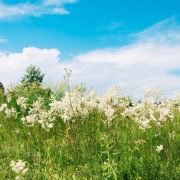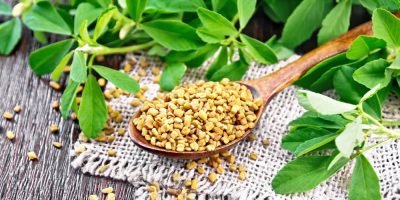These popular gardening herbs are a favorit choice for many reasons. They are easy to grow, relatively pest-free, and can be used in cooking, as decoration, or for their medicinal properties. Some of the most popular herbs include basil, rosemary, oregano, mint, and thyme.
Herbs are a great addition to any garden. Not only do they add flavor and interest to your food, but they can also be used for decorative purposes, as well.
There are a wide variety of herbs that can be grown in the home garden, but some are more popular than others. In this article, we will take a look at some of the most popular herbs for gardening, as well as some tips on how to grow them.
What are popular herbs for gardening?
There are many different herbs you can grow, but some are more popular than others. In this article, we will focus on seven of the most popular gardening herbs: basil, mint, rosemary, thyme, oregano, sage, and cilantro.

Basil
Basil is a popular herb for both its flavor and its aroma. Basil, also known as Ocimum basilicum, is a culinary herb of the family Lamiaceae. It is native to tropical regions of Asia and Africa. Basil is a tender plant, and is used in cuisines all over the world. It is commonly used in Italian cuisine and can be used fresh or dried. It is easy to grow and can be grown indoors or out.
Cilantro
Cilantro, also known as coriander, is a popular herb used in many cuisines around the world. The leaves have a strong, pungent flavor that is often used to add zest to dishes. Cilantro is a member of the parsley family and is native to regions of Europe, Asia, and Africa. The plant grows best in warm, sunny climates and can be found fresh year-round in many markets.
Cilantro has a long history of use in traditional medicine. The leaves and seeds are both rich in antioxidants and have anti-inflammatory properties. Cilantro has been used to treat digestive issues, skin problems, and respiratory infections. Today, cilantro is commonly used as a natural detoxifier and is believed to help remove heavy metals from the body.
When cooking with cilantro, it is important to use it sparingly as the strong flavor can easily overpower other ingredients. Cilantro can be added to soups, stews, curries, salads, and salsa. It is also a common garnish for Mexican and Asian dishes.
Dill
Dill (Anethum graveolens) is a popular herb used in many cuisines, especially Scandinavian, German, and Russian. The dill plant is an annual, growing to a height of 1-2 m (3-6 ft). The leaves are long and slender, with a blue-green color. The flowers are small and yellow, with five petals.
Dill is harvested for its leaves, seeds, and oil. Dill leaves are used fresh or dried as a seasoning for many foods, such as pickles, salads, soups, and sauces. Dill seeds are used as a spice, either whole or ground. Dill oil is used as a flavoring or scent in many products, such as soaps and cosmetics. Dill is easy to grow at home, and can be started from seed or transplanted from an existing plant.
Dill does best in full sun and well-drained soil. It is fairly drought tolerant once established. Dill does not tolerate frost well, so it is best to plant in the spring after all danger of frost has passed. Dill can be harvested throughout the growing season by cutting the leaves as needed.
To harvest the seeds, allow the flower heads to dry on the plant. Once dry, cut the heads off and shake them over a bowl to release the seeds. Store dill seeds in an airtight container in a cool, dark place.
Mint
Mint is one of the most popular herbs for gardening, and for good reason!
This versatile plant can be used in a variety of ways, from culinary to medicinal to simply ornamental. Mint is relatively easy to grow, and can be done so in a variety of climates. Additionally, mint is a very versatile herb that can be used in many different dishes and recipes. Mint can be used fresh, dried, or as an essential oil.
When using mint fresh, it is best to snip the leaves rather than pull them off the stem, as this can damage the plant. Fresh mint leaves can be used in a variety of dishes, from salads to cooked meats to desserts. Dried mint leaves can be used as well, and have a slightly different flavor than fresh mint leaves.
Mint essential oil can be used in a diffuser or added to lotions or other products for a refreshing scent. There are many different types of mint plants available, so you can choose the one (or ones!) that best fit your needs and gardening style. Some of the most popular varieties include spearmint, peppermint, chocolate mint, and apple mint. No matter which type of mint you choose, you’re sure to enjoy the many benefits this wonderful herb has to offer!

Rosemary
Rosemary (Rosmarinus officinalis) is a popular herb often used in cooking. It is part of the mint family and has a strong, pungent flavor. Fresh or dried rosemary can be used to flavor a variety of dishes, from soups and stews to chicken, pork, and lamb. Rosemary can also be used to make teas and infusions.
Rosemary is native to the Mediterranean region and has been used medicinally for centuries. Modern science has begun to validate some of the traditional uses of rosemary, such as memory enhancement and stress relief. Rosemary is a perennial herb that grows best in full sun and well-drained soil. It is relatively drought-tolerant once established.
Rosemary can be propagated from seed, cuttings, or division. When grown from seed, rosemary can take several years to flower. For quicker results, propagate from cuttings taken from an established plant in spring or early summer. Rosemary can also be grown in containers.
Potted plants will need more frequent watering than those planted in the ground. Rosemary can be used fresh or dried. To dry rosemary, tie sprigs together and hang them upside down in a cool, dark place until the leaves are crispy.
Dried rosemary can be stored in an airtight container for up to six months. When using dried rosemary, crush the leaves before adding them to your dish to release the flavor. Rosemary plants are relatively low-maintenance and pest-resistant. However, they can be susceptible to root rot and fungal diseases if they are overwatered.
Watch for signs of problems such as yellowing leaves or wilting stems and adjust your watering accordingly. For more information on growing rosemary, check out this guide from The Spruce.
Sage
Sage (Salvia officinalis) is a popular herb often used in cooking. It has a strong, slightly bitter taste and is frequently used to flavor meats and poultry. Sage is also a key ingredient in many stuffing recipes. In addition to its culinary uses, sage has a long history of medicinal use. Sage is thought to have anti-inflammatory, antioxidant, and antimicrobial properties.
It has been used to treat a variety of ailments, including colds, digestive problems, and depression. Sage is easy to grow and is a drought-tolerant plant. It can be grown in full sun or partial shade and does best in well-drained soil. Sage is an evergreen plant, meaning it will keep its leaves all year round. It can be propagated from cuttings or seeds. If you’re looking to add a flavorful herb to your garden that has multiple uses, sage is a great option!

Thyme
Thyme (Thymus vulgaris) is a member of the mint family and one of the most popular herbs used in cooking. It’s native to the Mediterranean region and has been used in cooking for thousands of years. Thyme has a strong, pungent flavor that goes well with a variety of dishes. It’s commonly used to flavor meats, vegetables, and soups. Thyme can also be used to make tea.
Thyme is a very versatile herb and can be used in many different dishes. It’s important to choose the right type of thyme for the dish you’re making. French thyme, for example, has a more delicate flavor than English thyme. If you’re not sure which type of thyme to use, ask your local herbalist or grocery store clerk for guidance.
When storing thyme, it’s important to keep it dry. Thyme that’s been stored in a moist environment will quickly spoil. Store thyme in an airtight container in a cool, dark place.
Final Words
There is no doubt that herbs are one of the most popular gardening choices. They are easy to grow, require little maintenance, and offer a plethora of benefits. From providing flavor to dishes to serving as natural remedies, herbs offer something for everyone.
If you’re looking to get started with herb gardening, the seven herbs listed in this article are a great place to start. Basil, cilantro, dill, mint, rosemary, sage, and thyme are all popular choices that are relatively easy to grow. Plus, they offer a wide range of flavors and uses, so you’re sure to find one (or more!) that you love.
Whether you’re a seasoned gardener or a beginner, herb gardening is a great way to add some freshness to your life. So get out there and get growing!












